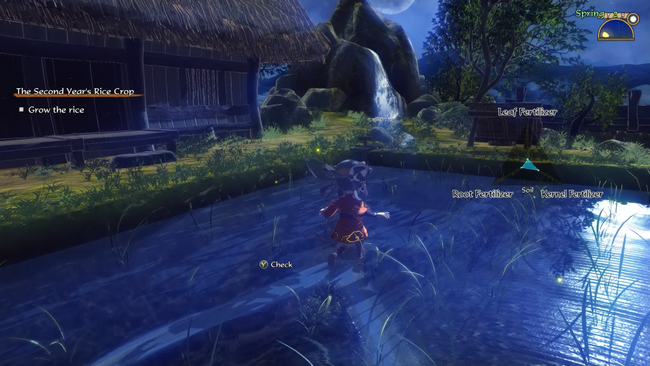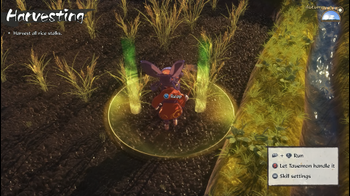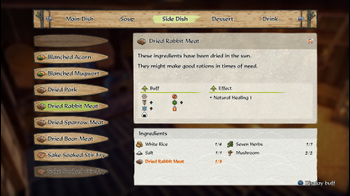Sakuna: Of Rice and Ruin Review
Making its debut three years ago at Comic Market, or Comiket, 92 in Japan, Sakuna: Of Rice and Ruin has had a lengthy path to release relative to other efforts in Japanese indie game circles. Since then, developer Edelweiss formed a partnership with XSEED Games and Marvelous Inc. to release it globally. While it has seen many delays, Sakuna: Of Rice and Ruin is one of the most graphically polished Comiket games I’ve ever played.
Comiket serves many functions for various Japanese communities and fandoms; for indie game developers, it’s an important event to show off the games they’ve been working on, gather feedback, and bounce around ideas. Though the games displayed might be rough around the edges, the event is a breeding ground for innovation. As such, Sakuna: Of Rice and Ruin is packed with a lot of intriguing ideas, but I wish its execution on them was more elegant and refined.

Sakuna: Of Rice and Ruin’s narrative starts off with a group of weary folks that accidentally stumble upon the land of the gods in search of something to eat. After failing to stop their entry and causing a ruckus, the game’s protagonist Sakuna, a goddess herself, is exiled to a remote island filled with demons along with the hungry bunch and her cuddly senior guardian Tama. The game revolves around Sakuna’s investigation of the mysterious island that serves as her divine repentance.
Cycling between an action RPG and a farming simulator, players familiar with older Harvest Moon titles, Rune Factory, or Stardew Valley may feel at home with the cadence of Sakuna’s adventure. After establishing a home base early on, the island is divided up into stages. These often have a set of sub-objectives to fulfill that raise exploration levels, usually consisting of finding specific treasure, conquering the innermost area, acquiring a set number of materials or ingredients, and killing enemies. Unlocking new areas is tied to reaching exploration level thresholds.
Armed with an array of sickles or mallets, hoes or spades, and Sakuna’s divine raiment, players have access to standard light and heavy attacks in combat, but the defining trait Sakuna has at her disposal is the divine raiment mechanic. Similar to a scarf, players can extend the raiment to latch onto surfaces, fling to the other side of the enemies quickly, and maintain aerial control. Sakuna will gradually learn abilities for both her standard attacks and raiment as players progress.
Battles are responsive and generally feel great to control; it’s reminiscent of Fairy Bloom Freesia, one of Edelweiss’s earlier works. There is enough tactical depth to keep combat compelling and exciting. Learning and mastering advanced properties, like how Sakuna has invincibility frames during certain raiment motions, feels rewarding to utilize in combat. Situational awareness is key as well since enemies can be flung into each other and into hazardous environmental objects, such as spikes or barricades. Sakuna can parry incoming attacks and relaunch enemies falling down back into the air to extend combos. What I especially love is the satisfying smack of a foe crashing into a horde of other baddies; the visual and audio feedback of the impact is immense and intense.
Not everything clicks into place gracefully though. The camera for some of the larger boss encounters isn’t as cooperative as I would like it to be. There were times when the camera just didn’t follow the boss’s movements as they briefly pranced off-screen and I had to chase after them blindly. I found platforming a finicky affair too; several stage designs ask for a level of finesse that the game doesn’t quite accommodate for. Players might find themselves on small platforms surrounded by spikes and a lot of enemies pestering them; it’s easy to slip off or have the divine raiment not reliably attach itself to surfaces they were aiming for. Although Sakuna can jump, most of her platforming capabilities are tied to the raiment itself and its inconsistency in where it decides to stick was a frustrating experience, that permeates throughout the game.
As you can surmise, Sakuna’s arsenal of farming tools means that she also learns how to become a farmer to keep her and the others alive. You will thoroughly learn how to grow rice in Sakuna: Of Rice and Ruin from tilling, planting seeds, proper water allocation throughout the seasons, harvesting, drying, threshing, and so on. Preparing fertilizer for greater yields, pulling out weeds, and looking out for pests are additional factors to consider. Farming is very involved to an astounding degree.
Growing rice, as it turns out, is a lengthy process. Seasons are divided into three phases and cycle constantly in-game. Every “day” that passes by consumes a phase, so Sakuna only has three of these days before a new season begins. Obviously, her goal is to have the rice ready to go before winter comes and players will have to dedicate entire days to ensure that happens. Seasons also drastically alter the lighting and weather conditions for stages. The game is vibrant and colorful naturally and the different renditions some stages have for seasons are striking.
Luckily one of the people you’re caring for, Tauemon, is crucially helpful in assisting you every step of the way - reminding you when the field does and doesn’t need water and what you should be doing next in the farming process. If you’re lazy or fed up with farming, you can let him take over it though the results may not turn out favorable.
Sakuna doesn’t level up by defeating enemies; it’s how well she grows rice. The better farmer you are, the stronger she becomes. As you manually go through the different steps of growing rice, Sakuna will learn farming skills that help her become better at them. These skills are great because they clarify several things that will have you scratching your head when you first see them: how much of the field has been tilled sufficiently, proper spacing between planting seeds, threshing quicker, not having hulling take an eternity, and so forth.
Whether you decide to produce brown or white rice, it makes a difference too, and each variety gives its own benefit. Brown rice gives enhanced food effects, but white rice will give Sakuna better stats as she levels up.
I’m left conflicted on Sakuna: Of Rice and Ruin’s constant handling of resource and time management. Moments of reprieve feel scarce because everything you do is on a timer. There were even bosses I even had to rush through out of necessity because the sun would set mid-battle and their nighttime variants are remarkably more deadly - practically unkillable due to the level hike. This sort of occurrence seeps throughout the entire game and discourages thorough exploration because of the constant stress of in-game days, and Sakuna’s fullness, depleting at alarming rates.
Dinnertime bears its own set of complications too. Sakuna only has a finite amount of time venturing throughout the island before her stomach starts growling, which deactivates any buffs a prior meal is giving her - including health regeneration (if that meal provided it). Enemies get significantly stronger during nighttime, which makes prolonged wandering quite dangerous early on. Before dinner is served, players have to plan out what’s on the menu.
Ingredients spoil as well, further adding an additional layer of utilizing resources effectively. Eventually, ingredients can be processed to either extend their shelf life or combined together for more complex menu items. Aside from temporary stat boosts, meals are the primary means to regenerating health too. If Sakuna is going into an unexplored and potentially dangerous stage the following day, it might be a good idea to splurge on that night’s entries.
During mealtime, characters will often tell stories about their pasts, the state of the world, their circumstances, and other narrative bits that help flesh out its simple story. It’s rather straightforward, but I appreciate the brief moment of rest amidst all the resource management. The entire game is heavily rooted in Japanese mythology, so there’s a lot to unpack in how the world has shaped them. I couldn’t stand Sakuna: Of Rice and Ruin’s cast at first, because they were all, intentionally, insufferable, and distrustful of one another. Be that as it may, it does a pretty impressive job building the sense of camaraderie between them in a touching manner over time. It supports English and Japanese audio tracks; the entire game isn’t fully voiced, but most of the story-relevant events contain a fair bit of voice acting.
Additional facilities and inhabitants will gradually fill up Sakuna’s base of operations. Crafting new weapons and armor grants her other means of strengthening herself. A training area lets players refine their combat skills. Players will also be able to send out people at gathering points to stock up even more resources on the side.
All this being said, Sakuna: Of Rice and Ruin is in a constant state of tug of war with itself. There were some points that it seemed as if I outpaced the difficulty curve of where the game expected me to be at, so I preemptively unlocked areas and objectives that felt like huge walls to overcome in order to progress. Thus, I had to wait for my rice harvest to build up enough stats to withstand what new locations threw at me. There is constant backtracking to previous areas that contain sub-objectives that couldn’t be achieved when you first visited them, including defeating a certain number of enemies at night, speedrunning boss enemies, and other similar tasks.

I jive a lot of what Sakuna: Of Rice and Ruin sets out to achieve conceptually as it juggles between tight fast-paced action RPG combat and thorough rice farming mechanics. Edelweiss unfortunately fumbles on key areas to an otherwise charming title. Platforming is a hassle most of the time, especially in later areas. Every system feels a step too steep into resource micromanagement, and it made me feel as if I was always playing on a tight schedule rather than being able to progress at my leisure. I wish I loved this game more, because there is a lot of heart, but sadly I came away merely lukewarm from the experience.


